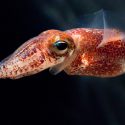Mutant parasites, unable to infect hosts, highlight virulence genes
With a single approach, microbiologists at the University of Wisconsin–Madison have identified dozens of clues to how human parasites may infect their hosts.
The researchers identified nearly 40 genes that, when mutated in the common parasite Toxoplasma gondii, prevented the parasite from forming an infection in the brains of mice. These potential "virulence factors" offer a smorgasbord of promising targets for developing drugs that could block or treat human parasitic infections such as malaria.
The new results are reported online this week in the Proceedings of the National Academy of Sciences.
Though a larger problem in the developing world, parasitic infections are not uncommon in the U.S.
For example, Toxoplasma can infect any warm-blooded animal and is most commonly acquired from improperly cooked meat or by handling feces from infected cats. Pregnant women and people with weakened immune systems are at greatest risk from Toxoplasma infection, which can cause brain damage and death in unborn children and immune-compromised patients, such as AIDS patients.
Despite this, little is known about the factors that regulate parasites’ abilities to infect their hosts, says Laura Knoll, professor of medical microbiology and immunology in the UW–Madison School of Medicine and Public Health and UW–Madison Waisman Center.
To study the question, Knoll and her colleagues at UW–Madison and the New York Medical College cast a wide net. Rather than analyze a single gene at a time for a role in virulence, they took the reverse approach, randomly mutating individual genes in the parasites, then looking to see which of the mutant parasites could no longer infect host brains.
"Let’s let the parasite tell us what’s important," Knoll says.
The broad approach helped them uncover dozens of genes — many of them previously unknown — that may provide new clues about how parasites like Toxoplasma and those that cause malaria, African sleeping sickness and water-borne diarrheal illnesses infect their hosts.
"This screen highlighted genes not previously seen as virulence factors," says Knoll.
From one mutant, Knoll’s team pinpointed a gene that acts as a nuclear traffic cop, directing molecular traffic in and out of the parasite’s nucleus, where the DNA resides. Mutations in the gene, called RCC1 (Regulator of Chromosome Condensation 1), disrupt the flow of molecules, causing a trafficking breakdown that likely underlies the mutant parasite’s inability to effectively sicken its host.
This study is the first evidence that this type of cellular function, called nuclear trafficking, may be important for infectivity, Knoll says.
"We hope to apply what we’ve learned here to other parasites," she says. "Our goal is to come up with new anti-parasitic drug targets."
Currently, she says, there are few good treatments for most human parasitic infections, and even some of those are very toxic to patients.
RCC1 presents a promising potential target because the parasite versions of the gene are very different from human and other animal versions, which reduces the likelihood of toxic side effects.
Knoll expects research on the other 38 identified virulence factors — still waiting in the wings for additional research — will reveal more insights about parasitic infection. "We know these genes and their functions are important for infection," she says. "We have good targets to go with."
Tags: biosciences, microbiology, research



